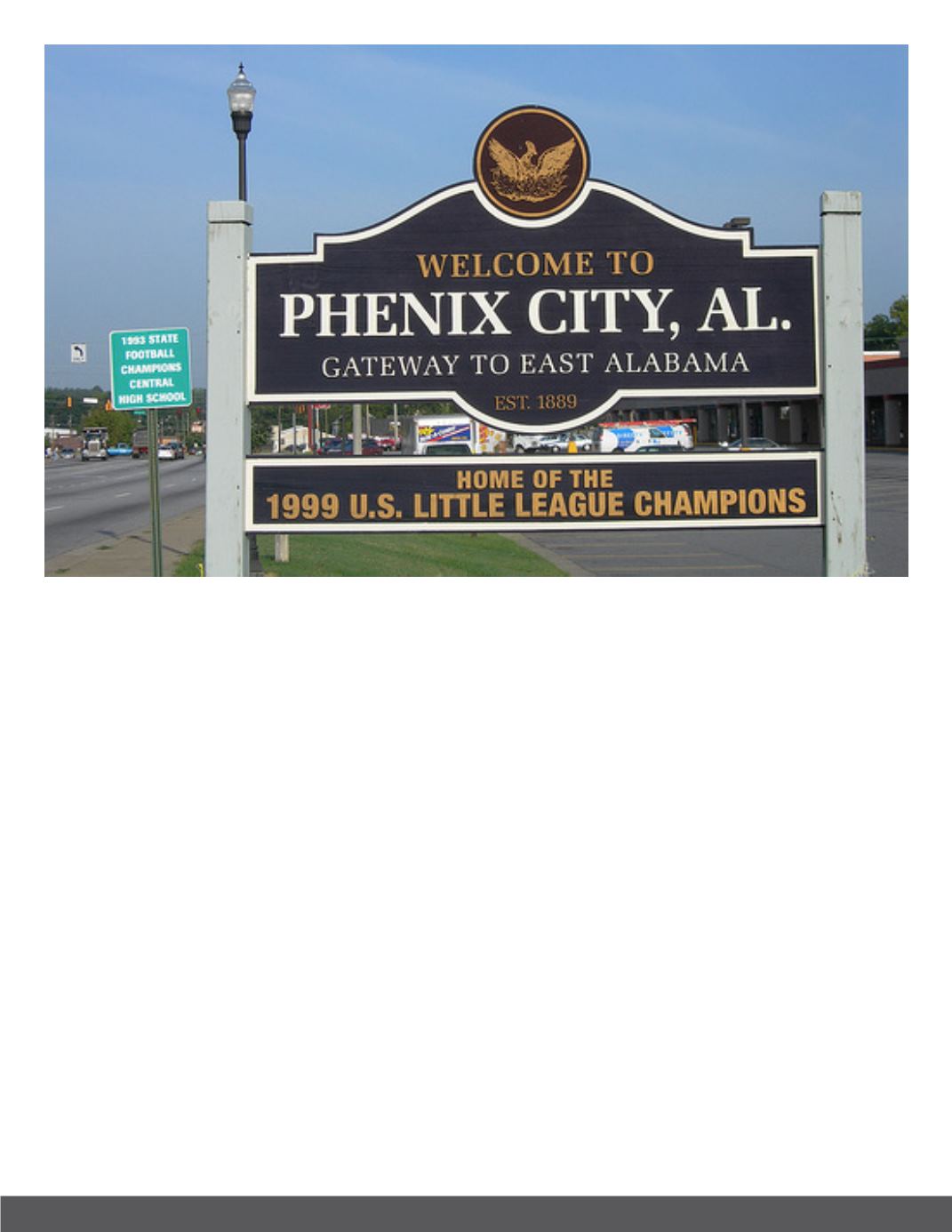
124 Business View Magazine - October 2016
corruption as being a necessary revenue producer in
the absence of other businesses. Meanwhile, from
time to time, some concerned citizens tried to fight
back – often meeting with violent resistance from the
gambling interests. For example, Hugh Bentley, a local
businessman and Sunday school teacher, organized a
group to clean up the city and had his house bombed
as a result. A local attorney, Albert Patterson, who had
moved to Phenix City in 1933, and who ran for the
State Attorney General’s office in 1954 with a pledge
to clean up the town, was assassinated outside his law
office after winning the Democratic primary.
In response to Patterson’s murder, Alabama’s Gov-
ernor, Seth Gordon Persons, placed the town un-
der martial law and National Guardsmen performed
around-the-clock raids on nightclubs, warehouses,
and gambling halls. Fort Benning declared Phenix City
off limits to its soldiers. When Albert Patterson’s son,
John, ran for, and won, the position of State Attorney
General in 1955, he prosecuted those who were re-
sponsible for his father’s murder and by the end of the
year, the town was rid of all organized crime and vice.
After the city’s rehabilitation, Look Magazine named
Phenix City as an All-America City in 1955, and in 2007,
Businessweek named it the nation’s Best Affordable
Suburb for raising a family. “We finally reached a new
era and we decided that we needed to spend a lot
more money in reinvesting and rebuilding our down-
town, rebuilding our image, and increasing our efforts
in tourism,” says Culligan. And that’s when Phenix City,
with help from its sister city across the Chattahooch-
ee, decided to move ahead on an innovative project
that was 30 years in the making and what ultimately
became the largest urban whitewater course in North
America. “It was one of those pie-in-the-sky dreams
that finally came true,” says Culligan.


